#but this is probably my favorite shuzo oshimi work
Explore tagged Tumblr posts
Text
How does one recover after reading Chi no Wadachi? 🥲
#chi no wadachi#this read was long overdue#but this is probably my favorite shuzo oshimi work#i know this is a psychological horror/drama but it's filled with so much pain and anguish underneath#it's hard for me not to cry for seiichi throughout#the maddening adoration and hatred he feels for his mother that it hollows out so much inside#that there's more his mother in him than himself#his progressions and regressions from his deep trauma#the ghost of his mother always lingering always watching for him to make a mistake#how it ripped him away from his childhood and now there's just this loneliness in adulthood#the emptiness one goes through when you live in the solitude of your trauma#goddamn don't even get me started when he meets his mother again and she's so old and frail and is just as empty as him#the recent chapter shattered me#i have faith the ending will deliver (maybe something hopeful but sad and bittersweet like happiness)#despite all the bleakness i'm hoping seiichi will be free and that there's a point to living
8 notes
·
View notes
Note
Hello.....If you don't mind me asking, can I ask, what are your top 7 favorite media (can be books/ manga/ anime/movies/tv series/etc) and your top 10 favorite (fictional) characters from any media? Why do you love them all? Sorry if you've answered this questions before......
Interesting specific.......
7 media huh?
SLC Punk - live action movie from the 90s about Punks in Salt Lake City during the 80s. As a trans person that grew up in Arizona in a region populated by a ton of Mormons I sorta related to it kinda and nowadays I feel like it's actually a really funny, really scary, and really beautiful movie that gets overlooked a lot.
The Shining by Stephen King (book) - it's not my favorite horror novel and it's not my favorite Stephen King novel, but it was the book that got me to enjoy horror. The story is so scary and good, the characters are fleshed out, and there's a whole underlying dialogue about abuse and alcoholism that's very scary. Which is part of why I don't like the movie, cuz the movie adaption (erases the usefulness of the titular "Shining") sorta erases the personal story about alcoholism and abuse. And, it's definitely there still, it focuses more of its efforts on just being a spooky haunted hotel, it's style over substance to me. The connection of the personal and horror made me sort of see the true story telling value of the genre, and now I'm like. In love with horror.
Inside Mari by Shuzo Oshimi (manga) - the best way to explain this is, what if Freaky Friday were more of a psychological horror. Reading Inside Mari has been a very important thing to me as an adult, I sorta see myself in it and there's so much trans emotions in this (there's a whole thing that Oshimi is probably trans), this work is so dear to me I refuse to read to watch other people's take or interpretations, which sounds bad but I just want my special thing that I interpret my way to be interpreted my own way. It's amazing and I love it. All of Oshimi's work has hit me in a personal place.
Wandering Son by Takako Shimura (manga) - one of the first portrayals of a trans person I saw in manga, and honestly still one of the best. There's a lot of criticisms we could give it, but I love it and I related to it so much. It was nice to see a story follow such a young trans girl (and boy) and see them grow. Probably part of why I decided to finally identify as trans.
Puella Magi Madoka Magica the Movie Part 3: Rebellion (anime movie) - this one is largely just emotional stuff that's coincidental. The original Madoka tv show (and thus first two movies) were great but I never thought it was perfect, but Rebellion emotionally murdered me and as everything else mentioned, it felt so relatable. Came out in a very important time frame for bonding when my husband, so I got to see it in theaters with him (twice technically, we went a second time with a friend) plus I got to see it with another friend (three times total) hehe. It's just like, a very big date for my husband and I, I remember it perfectly down to what I had for dinner (my first bowl of professional made ramen lmao). The movie just, really hit, and the circumstances around seeing it were just really important to me.
Lateralus by Tool (album) - I'm sure some people are gonna be like "whaaaa how edgy loser" or whatever about this. But Lateralus was an important album for me cuz it introduced me to larger intellectual concepts I'd never considered before, made me really fall in love with that brand of music, and was one of those things I would put on repeat when I felt very depressed (read: dysphoric). I know the members have sorta grown into shitty people (namely Maynard) but this album is just very important to me.
I'm just going to say The Green Knight (movie), there's a lot I want to put here, especially a lot about Arthurian literature, but I think the best way to just, placeholder all the Arthurian shit I'm obsessed with. The Green Knight is a fantastic adaptation that's incredibly beautiful and well acted. Love it.
tbh w/ you I don't wanna do characters rn so if you swing back by later I might.
10 notes
·
View notes
Note
FAVORITE CALL OF THE NIGHT CHARACTER GO
I KNOW YOU KNOW YOURE OPENING A CAN OF WORMS BUT SURE LET'S GOOOOOOOOOOOOOO
Hatsuka Suzushiro
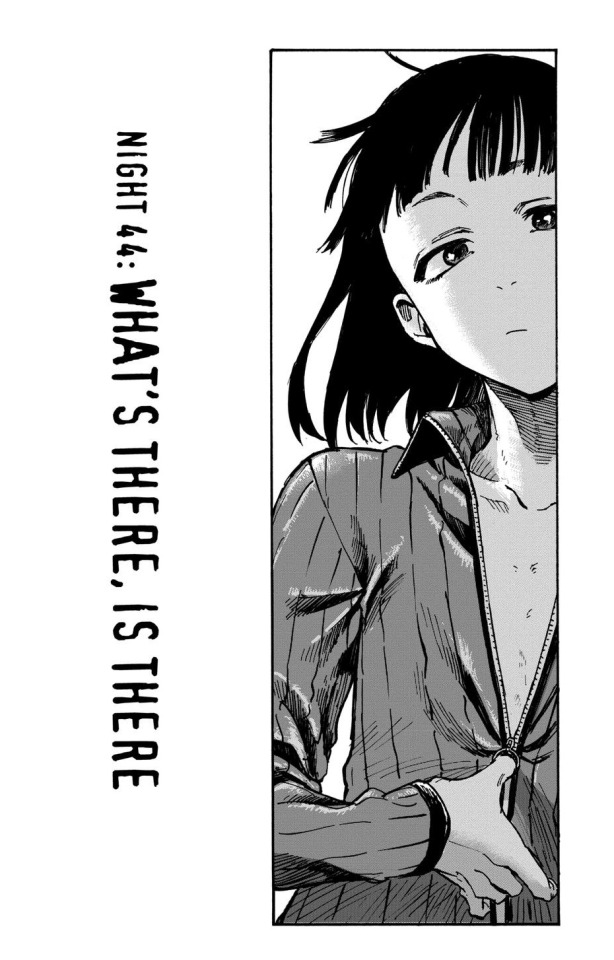
She is my de facto favorite simply because she is a femboy that can be read as a trans girl. I discovered Call of the Night when reading a bunch of vampire yuri, which was triggered by me reading Shuzo Oshimi's Happiness, where I read the vampire's as a trans allegory (and knowing Oshimi, they probably actually were trans allegories). Since reading Happiness I've just sorta seen vampires as trans, even when the media doesn't necessarily fit that interpretation, and going into Call of the Night to learn they just straight up had a character like this I was just like. God that's so genber.

I also just really love her character design. Hatsuka's normal outfit is dumb as hell but when she gets scenes that focus on her she's just really fun imo. She has this really soft approach to things with Ko, she feels very subdued and wanting to relax, while she also treats all her minions like she's some kind of fucked up dom.
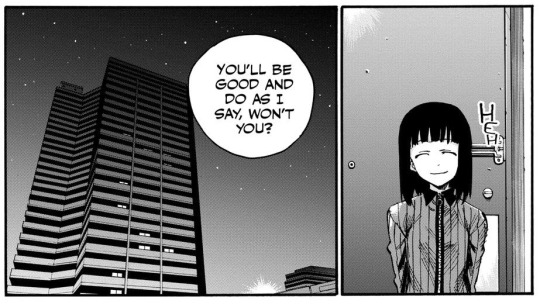
Sadly, she doesn't get a ton of time in the manga, and her past is never explored like the main characters, but that might honestly work to her advantage, less time to potentially become offensive and all that.
Nazuna Nanakusa
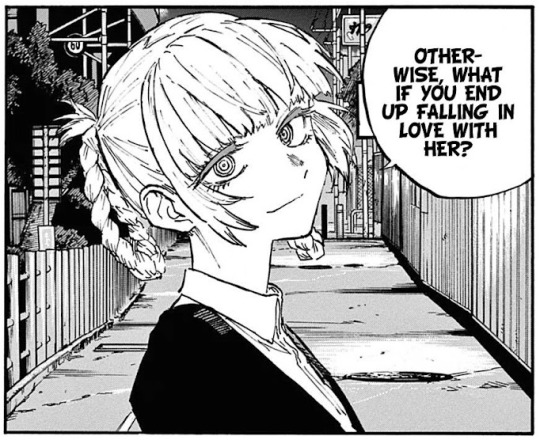
Obvi the main characters of a manga are going to have the most characterization. I kinda view Nazuna and Ko as opposite sides of the same autism coin. Ko struggles with socializing, where as Nazuna is a bit more of a natural at it, but both of them have a lot of the same attributes of sorrow and boredom and not really understanding love or emotions. I relate to Nazuna a lot more than Ko simply because I was a fucking party girl, and socializing is actually pretty easy for me. She's just fairly unique, she's cool yet dorky, intelligent yet an idiot. For a series that is relatively cartoony, she feels like a real person even in her cartoon-ness.

She also just has the most ridiculously appealing character design. That fucking hair, those eyes, she has an incredibly recognizable face. You can't mistake her for someone else. She wears that oversized jacket like a fucking cape, that's so genber.......
Also, as the manga goes on and it explores her history and her concerns and her issues with boredom (and ultimately depression) she just becomes a very interesting character. Learning that she essentially had a lesbian lover is shocking, but honestly so lovely. She becomes such a complicated and sad character that you just want to see her win at the end.
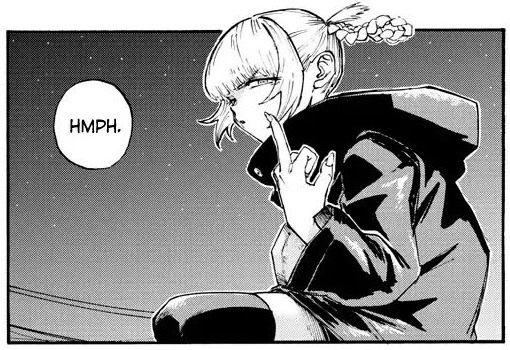
Midori Kohakobe

MAIDS MAIDS MAIDS MAIDS MAIDS MAIDS MAIDS MAIDS MAIDS MAIDS MAIDS MAIDS MAIDS MAIDS MAIDS MAIDS MAIDS MAIDS MAIDS MAIDS MAIDS MAIDS MAIDS MAIDS MAIDS MAIDS MAIDS MAIDS MAIDS MAIDS MAIDS MAIDS MAIDS MAIDS MAIDS MAIDS MAIDS MAIDS MAIDS MAIDS MAIDS MAIDS MAIDS MAIDS MAIDS MAIDS MAIDS MAIDS MAIDS MAIDS
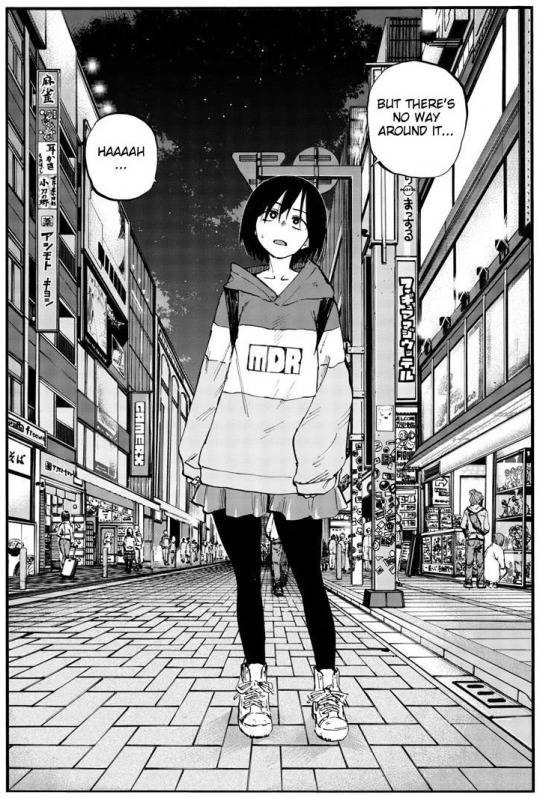
She's got this weird otaku vibe, which is sorta a trope in anime these days, "weird otaku girl that's also cute and popular" and I, like the sucker I am, eat that shit up. Also, she works at a maid cafe and you know I love maids. Her whole spiel about "everyone's weird, you just have to learn to love your brand of weirdness" is such a lovely thing - hence why it's literally at the top of my intro post. Her character design is basically me, I WEAR SHORT SKIRTS AND TIGHTS AND I LIKE MAID OUTFITS YEAHHHHHH. Also, did I mention she likes to dress up as a maid? That's so genber......

Lira Echigo

Lira hasn't appeared in the anime yet, and of the girls listed she has the least screen time, but she's so genber fun. She's this really tall girl who wears the cutest clothes in existence and she essentially forces Ko into dating her. I don't really have a lot to say about her, she's just a really fun character who kinda gets shafted by lack of screen time.
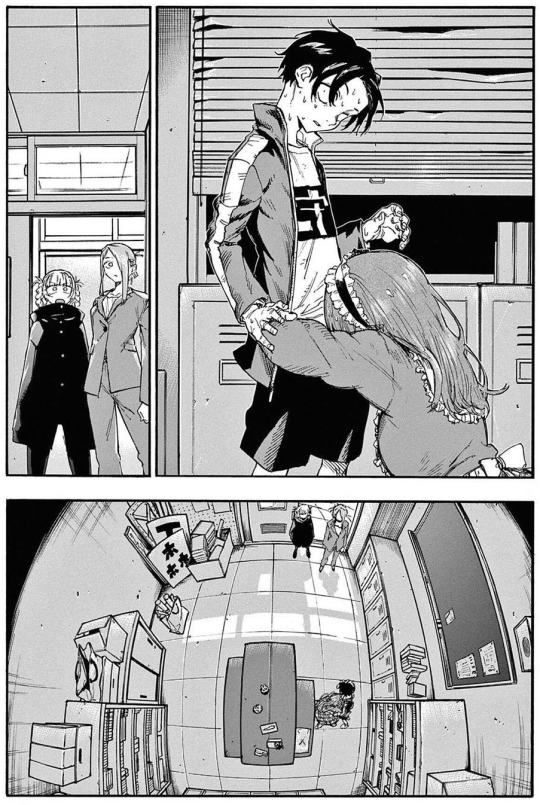

And, of course, Ko.

He's just the other side of that autism coin. I relate to his restlessness, I too am an insomniac who had issues in school because of said insomnia. I like him because he's just such a good kid doing what he can to have fun and to make his life make sense. I like it when he gets to be really really smart, like in the 86th or 87th chapter (I forget what it is) when he figures out Kyouko's plans. I also love it when it shows that he is just a kid. When he upsets Nazuna and he's trying to find her and he just sorta cries into his little walky talky watch about "I've never really had a fight before" while trying not to lose his friendship with her. idk it hits me in the heart.


He's just a great character imo. He feels real. He's sorta a more realistic anchor to the series, a good character to accompany Nazuna's silly shit. And, the fact he becomes a sorta bad ass when he SPOILERS becomes a half vampire. He's jut such an interesting fucker.



AND FUCK KYOUKO, COP CALLING NARC ASS BITCH
21 notes
·
View notes
Note
What are your fav works? I know you like csm, nohome, mob psycho. What else?
Sorry for replying late angel. I love lots of works, some I've finished and some I haven't (and probably never will). I'll try and think of all the notable ones, but I'm putting it under a readmore as I have no clue how long this will be.
I like much of Fujimoto's works, and I've watched OPM season 1. I've read welcome to room 305 (?) from WaNan, who's the author of no home. I would recommend you check all of them out just for fun if you like any of what you've mentioned in this ask!
I like Berserk. I try to tamper the harshness of my criticism for it due to Miura's passing but sometimes I just dgaf about being polite. It's a beautiful manga with interesting things to say about religion and growth and devotion, though, if you can handle the rampant women-hating both in the work and in the fandom. I haven't finished it.
I like Evangelion because Asuka is in it. That's it. I've watched the main anime and movie but I haven't watched any of the rebuilds or read the manga.
I love loooooooove Wayama Yama she's a seinen/slice of life mangaka and I would encourage you to read all of her stuff. Most of it's translated on mangadex and her style of art and writing is so distinctive and charming and sneakily hilarious I adore her so so much! Karaoke Iko! Is the most cinematic, and the first of her's that I read, but you can start anywhere tbh.
I love HxH. I read the manga starting from the end of 2011 anime a few years ago, and I've been trying to pick at it again because I forget a lot but I'm slow about it. It's a long shounen and it's very shounen in the ways that it's shounen so if you don't like that sort of stuff I would steer clear, but it's also poignant and really emotionally jerky and the characters are very engaging. The fandom is annoying as those of popular shounen tend to be however.
I read up to 300something of BNHA when I was like 16 so I have thoughts about it but none of them are that serious or engaged anymore. The same case with demon slayer. They're a type of shounen that's very easy to grow out of, IMO. I just like imaginifn the characters transgender I have a lot to say about them transgender.
I...enjoy Devilman. I like old archetype-building offensive yaoi from the 70s it's like crack to me. I really really enjoy it.
This spring I read Dungeon Meshi, and I liked it. Kabru is a lesbian and Falin/Laios are my favorites.
This summer I read and finished A Cruel God Reigns by Moto Hagio, Otoyomegatari by Kaoru Mori, and ~100 chapters of Golden Kamuy. I Reread and finished Chi No Wadachi by Shuzo Oshimi. I loved all of these works very very much but my reasons for loving them are all very different and I would inspect HEAVILY before committing to reading any, specifically the first and last ones. I need to read more seinen/josei. I have many thoughts about all of these but my audience is primarily interested in things outside of them so I'm not very motivated to them. I may one day though.
I've started reading Dragon Ball btu not very seriously. I like that little saiyan he's like a petri dish of yeast to me. Also Patalliro (longest running shoujo, first anime to feature homosexuality, also mpreg). These are all old/dated franchises and you can very clearly tell when reading them.
That's the brunt of it I think. I have a mangacap blog @yaoicel if you want to scroll through some of the one-off things I've read but I haven't posted on it in almost 3 months.
0 notes
Text
Review of Miss Kusakabe
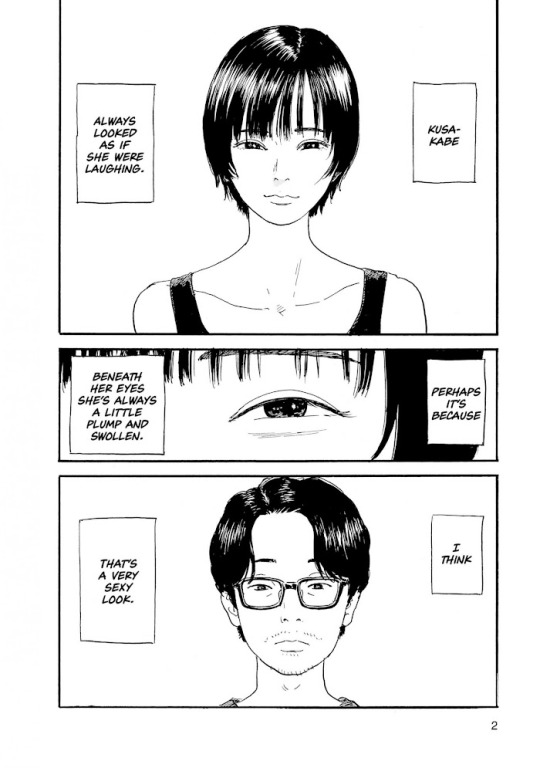
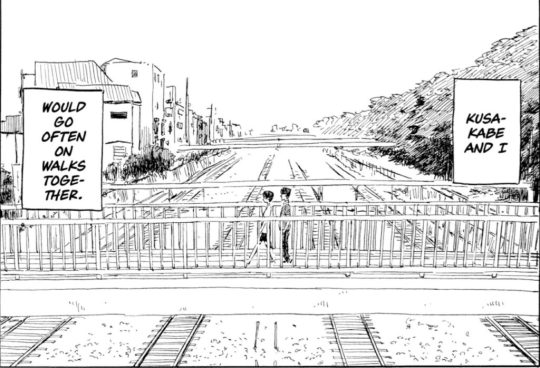
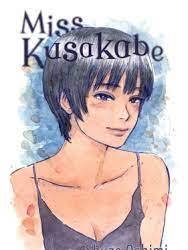
Overview: 'Kusakabe-San', or 'Miss Kusakabe' in English, is a short one-shot manga by Shuzo Oshimi, author of 'Happiness', 'The Flowers of Evil', 'Blood on the Tracks', and others. This is a very short work, only about 21 pages in length. 'Miss Kusakabe' follows the story of a man who comes home one day to find a woman sitting down at his door. This woman is Kusakabe-San, and her only intentions with this man seems to be around having sex with him. There really isn't much else to the story, as Kusakabe-San and this man have sex throughout, Kusakabe-San reveals that she knows a lot about plants and hardly eats meals. Later on, Kusakabe disappears from the man's door, prompting the man to go out looking for her. He finds her, despite her change in appearance, and the story ends almost exactly how it began, with Kusakabe-San wanting to have sex with the man. Review: I love Shuzo Oshimi. His narrative styles have produced some of the most interesting psychological thrillers I have read. 'The Flowers of Evil' is one of my favorite manga, and Oshimi as a whole is probably my favorite mangaka. However, as much as I'll praise the works of Shuzo Oshimi, this one gathers none from me. Oshimi never shied away from having sexual elements in his stories, but having one entirely based on sex didn't work out in his favor. This story is boring, giving us no likeable characters whatsoever. It can even be gross, especially during one scene about halfway through involving vomit. The dynamic between the characters is just awful and toxic, as Kusakabe-San will just flat out tell our protagonist that she also sleeps with other men, sometimes right before seeing him. The guy in the story as well has faults. Kusakabe-San is obviously in a rough and vulnerable state, and rather than offer her any sort of help, he just treats her as an object. The story also suffers from being just way too short. I can see a potential to there being a commentary on the lives of people who are just broken down, acting without judgement to try and cope with whatever issues they are dealing with. If that were the objective of 'Miss Kusakabe', it can be really hard to tell. Rather than flesh out that potential story into a longer work, the 21 page manga feels incredibly rushed, leaving the characters no room to develop or reveal whatever issue in life they may be facing. It could have been much better had Oshimi opted to do that instead of a short one-shot. I can't really recommend this manga to anyone, as I just don't see how it can appeal to one's interest, unless I am just blatantly missing the deeper, insane meaning to this story (if I am, please let me know). Rather than produce anything like the interesting psychological thrillers he has in the past, Shuzo Oshimi instead writes a stupid, gross, and uninteresting work that makes me think he wrote just because he was just wildly horny. If I could score it, I would give it 3/10. Three points only because I enjoy Oshimi's art style.
1 note
·
View note
Text
Staff Picks: Our Favorite Manga of 2019
Welcome to the first post in our annual “Staff Picks” series, in which the Ani-Gamers team selects some of our favorite anime, manga, and video games of the past year. As is the custom, we begin with manga.
2019 was a year of transition for the manga industry. The breadth of manga available in North America is larger than ever thanks to an array of seemingly thriving publishers. Japan-backed veterans Viz Media and Kodansha Comics continue to pump out great books, Seven Seas is more active than ever, and Square Enix has now thrown their hat into the ring with a new US-based subsidiary. But the biggest news of the year is the rise of digital manga services. In late 2018 Viz launched their revamped digital Shonen Jump experience (simulpubs and the full back catalog for some of the most popular manga in the world for the absurdly low price of $1.99 a month), followed shortly thereafter by Shueisha’s Manga Plus, a competing free manga service offering major titles from Viz’s Japanese parent company (go figure). Meanwhile, third-party services like MangaMo are starting to explore the digital subscription space. 2020 may just be the year that manga has its Crunchyroll moment.
That’s all the business side, though! Now it’s time to talk about the comics themselves. This year we’ve got three staff members participating, showcasing stellar manga stories across the genre spectrum, from whimsical fantasy to gothic horror to understated romance. Enjoy, and feel free to chime in with your own 2019 picks in the comments.
David Estrella
#3: At the Mountains of Madness
Quick disclaimer: H.P. Lovecraft was a big-time racist and I’m very aware of the contemporary re-evaluation of his works in the context of the man’s politics. That said, Gou Tanabe’s adaptation of Lovecraft’s novella is still an incredible work that should be taken with the illustrator’s own merits in mind. It’s Tanabe’s own talents that really elevate an old story that has been mined for parts and made relatively obsolete by other creators. As an artist, Tanabe’s visuals paint a perfect picture of alien desolation and dread, and his approach to pacing has few parallels among his peers. It’s a manga that doesn’t read like a typical manga and as far as graphic novels go, Tanabe is comfortable pulling from as many Western influences as needed without losing sight of his own identity and ideas. It’s simply a good comic from an artist that’s probably better than Lovecraft deserves.
#2: Bakemonogatari
Having rewatched the TV series innumerable times before reading the novel, I was convinced there wasn’t much new ground to break with Bakemonogatari. Oh!Great proved me wrong. The manga artist’s career-defining works had their moment before I was aware of them so I came into this unprepared for what I would find. Not content to simply rely on Nisioisin’s prose to carry the familiar story of a boy, a girl, and the crab spirit that stole her physical weight, Oh!Great pushes the imagery to extremes that not many artists would dare attempt. It’s almost overwhelming to see the ambition in every page that features some wild shifts in angles and perspective and yet remains totally comprehensible. The kinetic energy of the manga does override some of the finer, subtler points of the source but I can respect it as its own creation separate from the original.
#1: Nicola Traveling Around the Demon’s World
Nicola Traveling Around The Demon’s World is the best manga that I’ve read in 2019, rising above even my Monogatari bias on the virtue of being a completely new and fresh title, drawn with an infectious sense of joy and wonder that you can’t find in much of anything these days. I tend to fly through manga as quickly as I can read it, to the dismay of any hard-working comic artists reading this, but Nicola is worth the time to slow down and properly take in all the details inked onto the pages. It’s not Asaya Miyanaga’s desire to show off their skills when the panels are brimming with character, but instead it’s their love for their creation. Nicola might have run in a magazine explicitly marketed at adult readers but it would be unfair to place it in a box that would discourage young manga fans from reading this.
Ink
#3: Kino’s Journey – The Beautiful World
As someone who remains 100% in love with the 2003 anime adaptation of some of Keiichi Sigsawa’s Kino’s Journey novels and someone who found the 2017 anime adaption reboot largely soulless and hugely disappointing, I am fully prepared to defend my claim that this manga not only carries the very essence of the 2003 adaption but successfully builds on it in a few ways. First off, the stories, which include new and established chapters, are by Keiichi Sigsawa, so everything’s right from the source (via translator) there. Secondly, illustration by way of Iruka Shiomiya offers everything one could ask for in a title with such disparate situations as Kino’s Journey. Gone is the bishi Kino of 2017, and the more androgynous design returns. Heavy detail is placed into Kino’s motorad, Hermes, as well as weaponry and other machinery, but more detail is also placed on gore … which is a lot more prevalent and, as one might expect, not illustrated in detail to evoke a feeling of pleasure. Each volume also begins with a lovingly drawn, two-page spread overlain with a translation from Sigsawa’s original novels. This manga is only #3 on my list, because it’s another, albeit fantastic, iteration of something I already love, and that puts it at an unfair advantage over the other two in my list.
#2: Girls’ Last Tour
When the anime adaptation of Tsukumizu’s Girls’ Last Tour manga aired, the series of successive vignettes seemed the spiritual successor to the 2003 adaptation of Kino’s Journey. The episodes, like the source material, focus on moe blobs Chito and Yuuri exploring a stratified, post apocalyptic landscape via kettenkrad in search of, well, anything. While the episodes sometimes feel like a platformer video game with regard to how characters get from point A to point B, the human elements of observation and imagination are ultimately what make the series so enthralling in portraying the means necessary for maintaining sanity in the face of desolation. The anime, however, does not adapt all of the manga; the last two volumes are (as of yet) not adapted, and they are worth reading to the very end. The manga sports a style that melds the industrial with the abstract/absurd to simultaneously isolate humanity and show the ways in which it thrives. The chapters are often pensive think pieces which exploit innocence as a lens to both denounce the destruction of an inherited world and praise that which is found therein. The art, despite being hyper-mechanically and -pasturally focused, is admirably minimalist; a few lines often define landscapes, and the resulting emptiness is of the utmost importance for atmosphere and tone. Panel progression and related mastery of visual metaphor are so very important to the interpretation that I question whether dialog is necessary at all. That said, the charming, often (but not constantly) comical relationship between the odd couple MCs does help move moments along in the more stagnant bits while providing enough chuckles to press on.
#1: Happiness
Despite being a huge fan of Shuzo “Your Mental Discomfort is My Middle Name” Oshimi, this manga is about vampires, and I am very much burnt out on vampires and werewolves and zombies and the like. To be fair, however, Happiness is just as much about vampires as most vampire movies are about vampires. That is to say they are about (a) hunger. More to the point, and more to Oshimi’s forte, this 10-volume deep-dive into a youth mentally dealing with his newly awakened, biological need to feed is a visual feast from which Oshimi wants readers to catch the warm coppery waft of life. I fell in love with this title with Volume 2. The initial concept in the visual depiction of hunger - a swirling and distortion of character POV that increases in magnitude with the length of abstinence - feeds right into Oshimi’s Francophilia; post-impressionist landscapes and portraits are definite influences, and other European styles are invoked as well for jaw-dropping art used mainly in chapter breaks. Oshimi’s visual style has improved by leaps and bounds since Flowers of Evil, and that’s saying something given how much I love the visuals in the latter volumes of that title.
Evan Minto
#3: Bloom Into You
It’s been a pretty quiet year for Bloom Into You, with only a single book (volume 6) released in the US. However, 2019 was the year I discovered this wonderful manga, so here it is on my list. Bloom Into You is a yuri manga with an unlikely premise: its main character, Yuu, has never had feelings for anyone, boy or girl. Even when Touko, the seemingly perfect student council president, confesses to her, Yuu feels nothing, but as she spends more time with her she finds a hint of something growing in her heart. Bloom Into You is all about the slow burn, the uncertainty and furtive glances of young love. But what especially sticks out to me is the way it captures — intentionally or not — the experience of asexuality. Where most manga romances follow characters seeking love from others or obliviously stumbling into it while the audience cheers them on, Bloom Into You is about the process of introspection and overthinking, as Yuu tries to figure out if she is even capable of love. Nio Nakatani’s character designs and realistically stylish costumes are a delight, and come to life beautifully in her flowing, evocative art style. I can’t wait to see how this series wraps up next year.
#2: Witch Hat Atelier
It’s rare that I find a manga that I want to read for the artwork alone. Kamome Shirahama’s Witch Hat Atelier is exactly that, and as if the stunning art weren’t enough, the story is also fascinating in its own right. Coco is a village girl who dreams of magic, but rarely gets the chance to interact with the mysterious witches of her country. When a grave mistake causes Coco to unleash a dangerous spell on her village, she gets taken in as a witch’s apprentice and discovers her country’s long-held secret: magical power isn’t innate, but is called forth by drawing magical signs with special ink. Anyone can draw, and thus, anyone can make magic. That direct metaphor for art would be pretty inspiring if Shirahama’s illustration style weren’t so intimidatingly beautiful. Everything from characters to backgrounds is painstakingly rendered in a style that’s halfway between a woodblock print and the textured drawings of Kaoru Mori (A Bride’s Story). The world of Witch Hat Atelier feels tangible, weighty, lived-in, yet simultaneously light and whimsical. I’ve only just started on Coco’s journey, but with art like this I will read just about anything Shirahama puts out.
#1: Chainsaw Man
Viz launched their Shonen Jump app in late 2018, offering easy access to dozens of currently running and retro manga series from Shueisha’s flagship boys magazine. As for me, I jumped into the app and skipped right past One Piece and its ilk to find the most dangerous Shonen Jump manga of all: Chainsaw Man. Denji is a horny 16-year-old boy who makes money by selling off his organs and hunting monsters called “devils.” When he dies (spoilers), his pet chainsaw-dog devil merges with his body, turning him into “Chainsaw Man,” which is basically just “Denji but with chainsaws growing out of his arms and head.” Tatsuki Fujimoto’s manga is an unhinged, action-packed spectacle of blood, guts, and bone-headed idiocy, fueled by the antics of Denji (number one goal: “touch some boobs”) and his unstable devil-hunting partner Power (a devil possessing the body of a dead girl). The series is heavy on the comedy, bouncing a cast of morons and psychopaths off of each other in increasingly destructive ways, but it also takes turns into heavy drama and even romance, all of which Fujimoto handles with a surprising amount of sensitivity. The art is scratchy and high-contrast, but full of unforgettable action set pieces including a giant fox demon taking a bite out of a building and a high-speed car chase with a devil who can turn anything she touches into a bomb. Chainsaw Man is the closest thing we’ve got to reading a Hiroyuki Imaishi (Promare) doujin manga in English, so naturally it’s my manga of the year.
Staff Picks: Our Favorite Manga of 2019 originally appeared on Ani-Gamers on January 6, 2020 at 6:53 PM.
By: David Estrella
0 notes